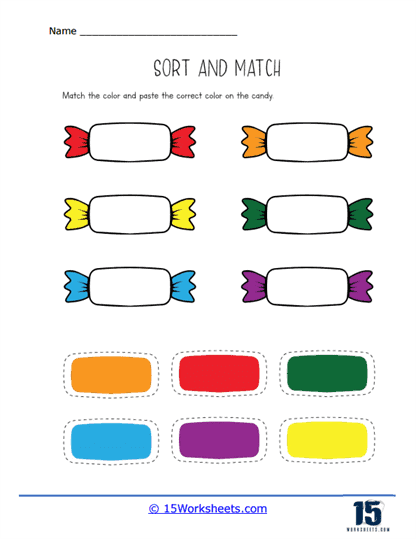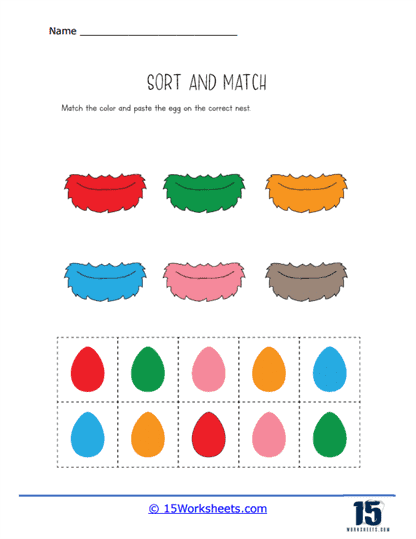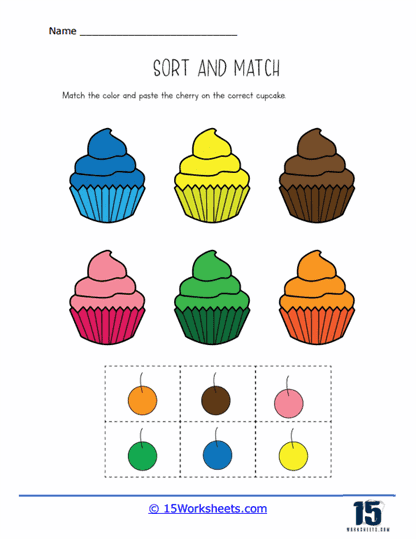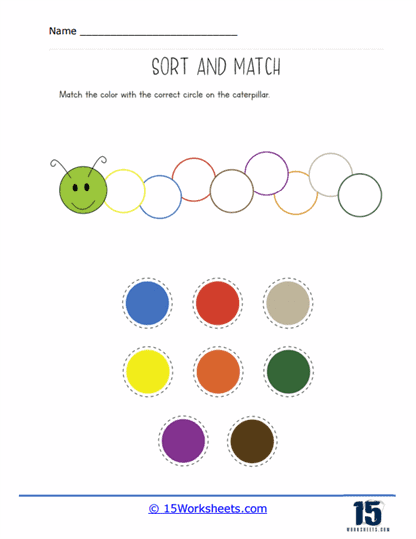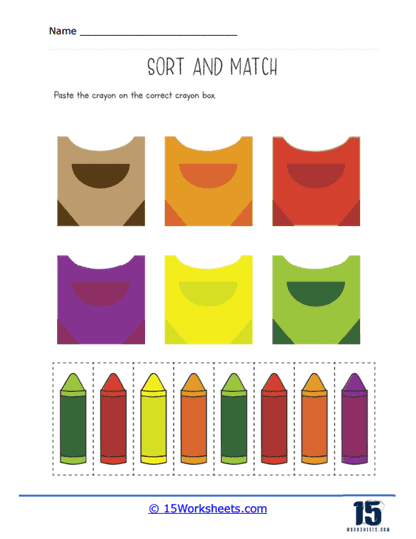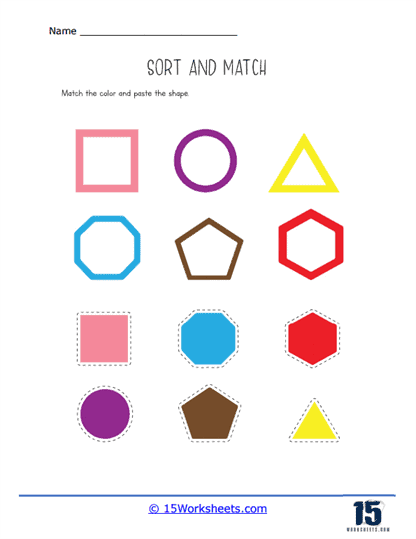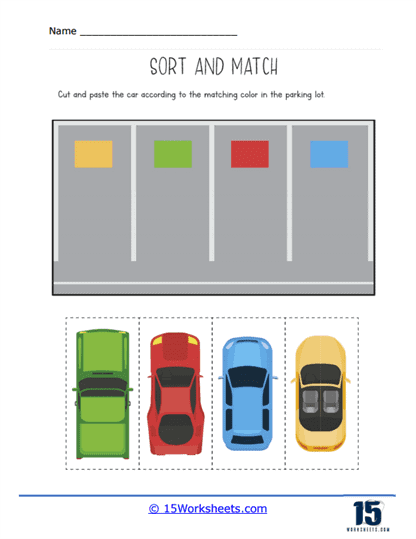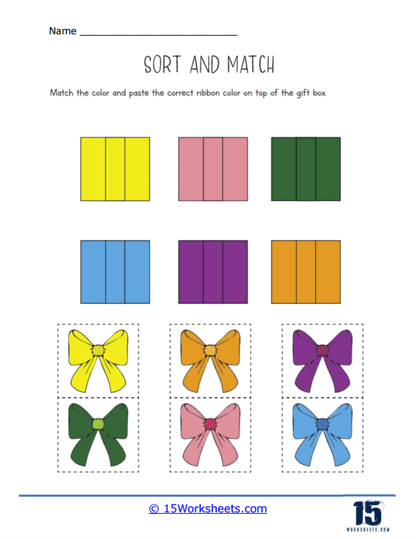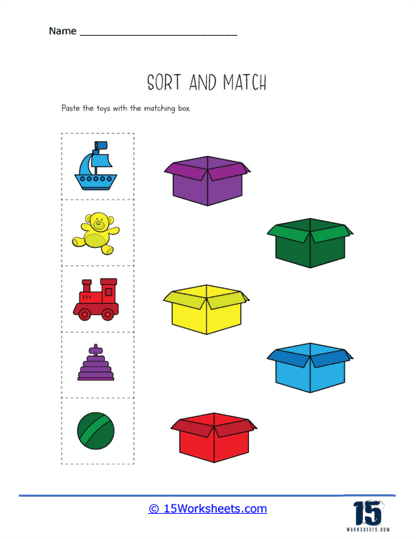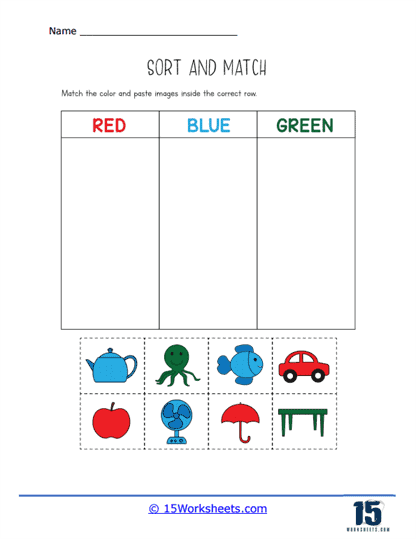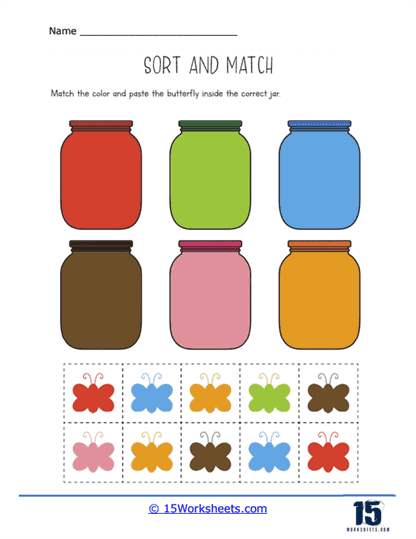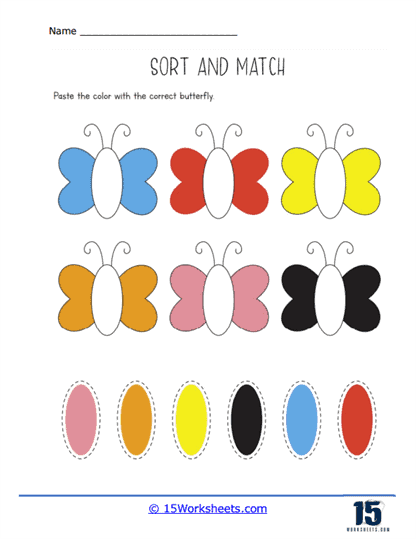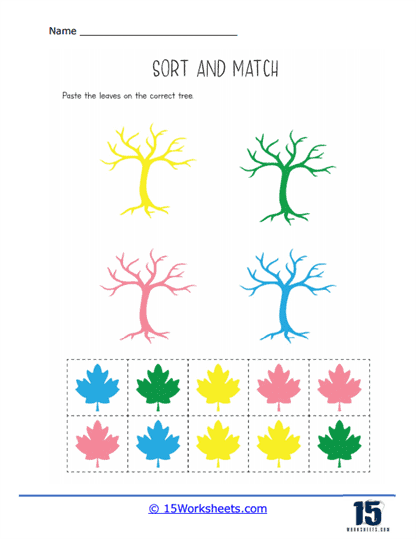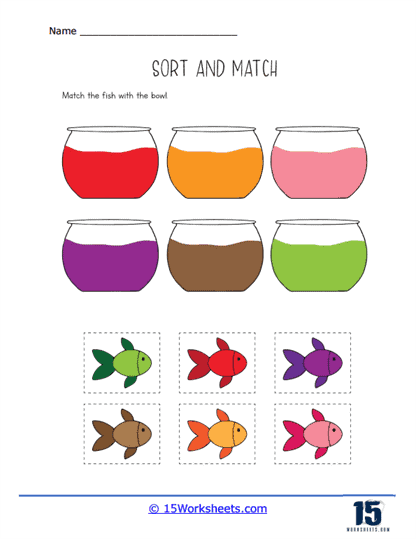Sort and Match Colors Worksheets
All About These 15 Worksheets
Young learners practice sorting and matching colors with this comprehensive collection of Kindergarten worksheets. This series is designed to introduce them to the concept of color sorting and matching, enhancing their color recognition skills, visual discrimination, and cognitive development.
Through a variety of interactive exercises, students will engage in hands-on activities, games, and puzzles that involve sorting and matching colors. These worksheets also provide opportunities for students to develop their critical thinking abilities, problem-solving skills, and logical reasoning while having fun with colors. Through these worksheets, students will:
- Practice matching objects of the same color, reinforcing color recognition and visual discrimination skills;
- Hone their visual perception and reinforce their color associations through a variety of exercises that involve categorization and matching based on colors;
- And develop their fine motor skills through cut and paste activities, providing a fun hands-on activity that reinforces their knowledge on color recognition.
Through this interactive series of Sort and Match Colors worksheets, young learners will develop essential skills in color recognition, visual discrimination, critical thinking, and problem-solving. By participating in various activities that involve color sorting objects and matching colors, students will enhance their cognitive abilities and logical reasoning.
By engaging with these exercises, students will develop a love for colors, strengthen their fine motor skills, and cultivate a deeper understanding of how colors can be sorted and matched. Ultimately, this collection serves as a stepping stone for future academic success, fostering a strong foundation in sorting skills and an appreciation for the colorful world around them.
How to Teach Students to Sort and Match Colors
Teaching students to sort and match colors is an essential early childhood skill that helps build a foundation for more advanced learning. Here are some steps and activities to teach color sorting and matching effectively.
- Introduce basic colors: Begin by introducing primary and secondary colors to your students. Use flashcards, color charts, or real-life objects to help them become familiar with each color’s name and appearance.
- Start with fewer colors: When first teaching color sorting and matching, start with just two or three colors. Gradually increase the number of colors as students become more confident in their abilities.
- Use manipulatives and objects: Provide students with a variety of colored objects, such as counters, blocks, or toys, to sort and match. Encourage them to group the items by color and discuss their choices as they work.
- Create sorting and matching games: Make learning fun and engaging by incorporating games into your lessons. Some ideas include:
- Color scavenger hunt: Ask students to find objects of specific colors around the classroom or outdoors.
- Memory game: Place pairs of colored objects or cards face down, and have students take turns flipping over two at a time, trying to find matching colors.
- Color bingo: Create bingo cards with different colors and have students cover the called colors with matching counters or tokens.
- Use art projects: Encourage students to explore colors through art projects, such as painting, collage-making, or drawing. This allows them to experiment with colors while developing their sorting and matching skills.
- Incorporate literature: Read books and stories that focus on colors and color recognition. Discuss the colors featured in the story and encourage students to identify and match them.
- Create color-themed days: Designate specific days to focus on one color at a time. Encourage students to wear clothing in the chosen color, and plan activities and games centered around that color.
- Use technology: Utilize educational apps, websites, and videos that teach color sorting and matching. These resources can reinforce learning through interactive and engaging activities.
- Encourage real-life connections: Help students make connections between the colors they are learning and real-life objects, such as food, clothing, or items in their environment.
- Assess progress and provide feedback: Regularly assess your students’ progress in color sorting and matching. Offer constructive feedback, praise their efforts, and adjust your teaching approach as needed to ensure success.
Remember to be patient and consistent in your teaching, as each student will learn at their own pace. By incorporating a variety of activities and approaches, you can create an engaging and effective learning environment for your students to develop their color sorting and matching skills.

